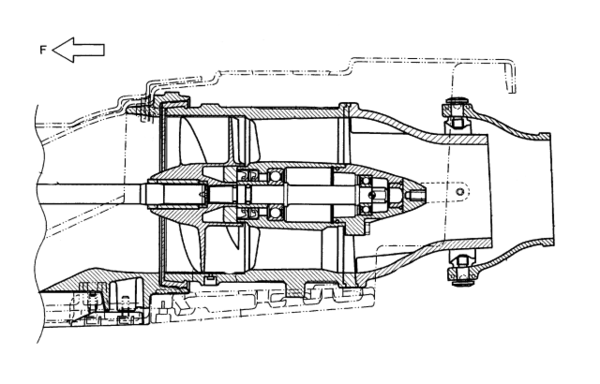Wikijunior:How Things Work/Jet Water Pump
A pump-jet or water jet is a method of propelling boats and water-borne craft through water. Most boats and ships are pushed through the water using a traditional rotating propeller or"screw". This works well, except in shallow water or places where water-weed grows.
When a "naked" propeller touches anything other than water it is likely to become "fouled" (bent or obstructed) and may stop working. Propellers are also dangerous when working near large creatures such as whales, sharks and human divers, who may be injured by the sharp rotating blades. Water jets can often be rotated to steer the vessel, so that it does not need a rudder. This is called "Vectored thrust"
To avoid these problems a New Zealand inventor called Sir William Hamilton tried first to simply enclose the traditional screw propeller in a protective frame or cage, but after some experiments discovered that either a ducted propeller with nozzle, or else a centrifugal pump and nozzle worked better. The first functioning pump-jet propelled boat was launched in 1954.
Here are some pictures to illustrate the difference between a conventional (naked) maritime screw propeller and the pumped water jet fitted to a torpedo.

